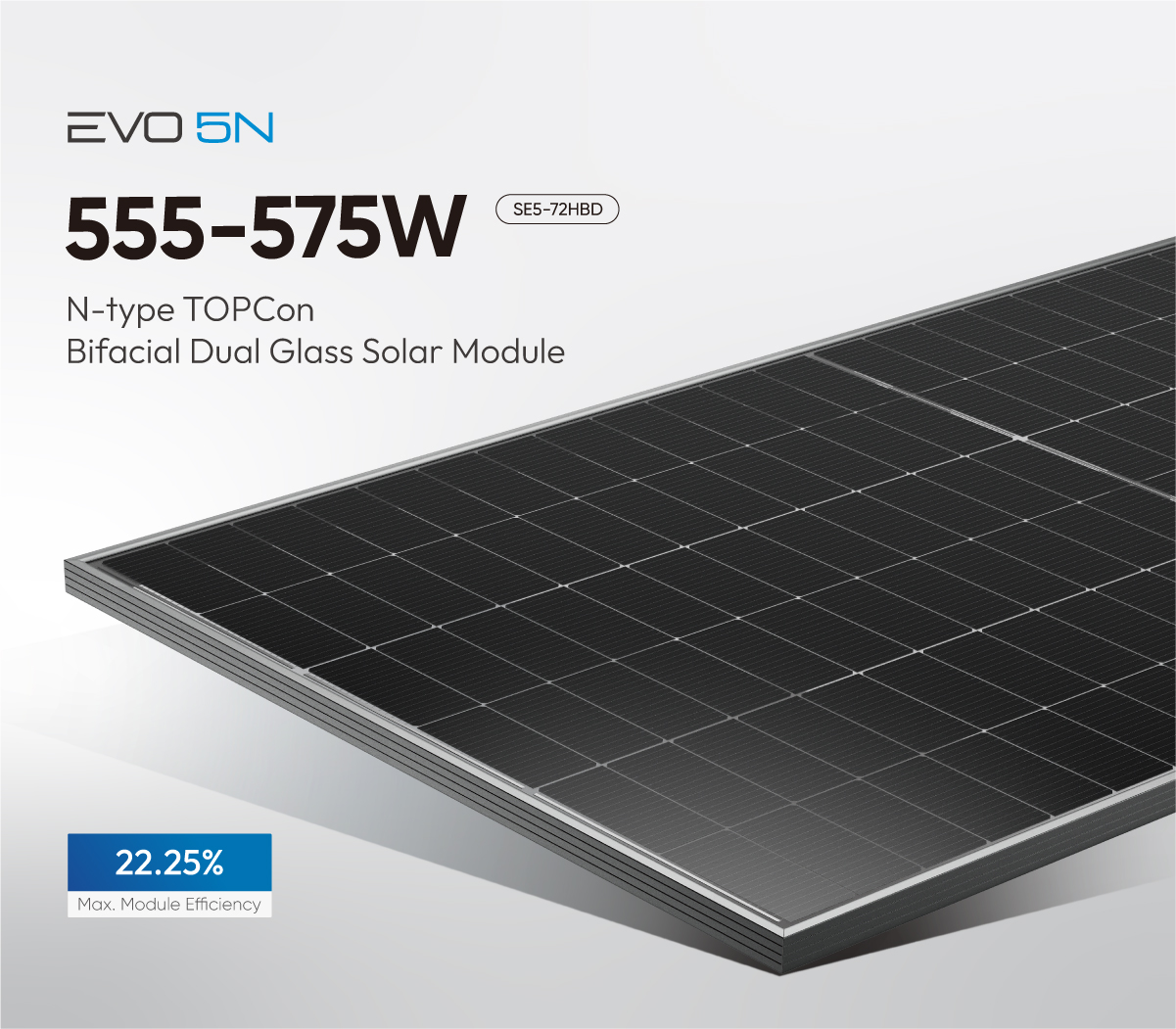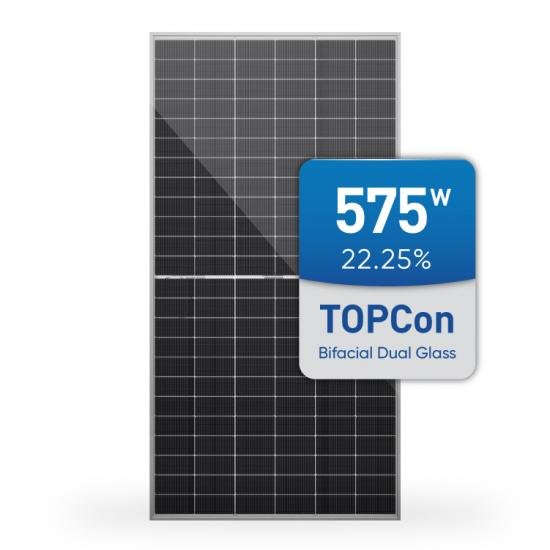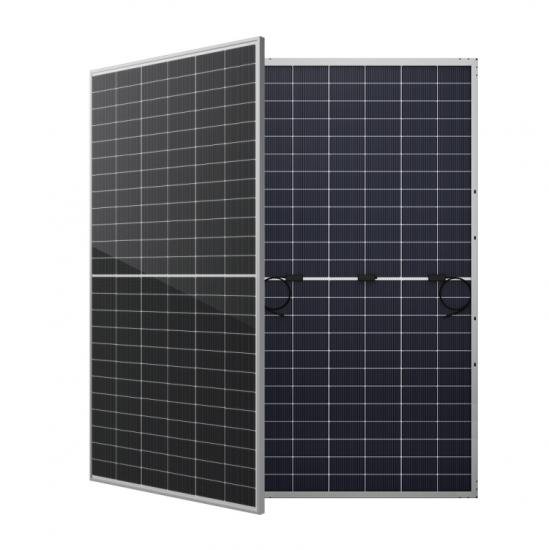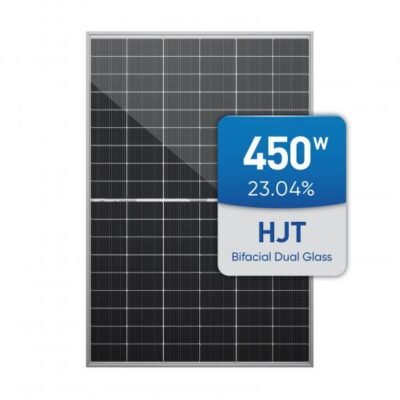
EVO5N 575M Bifacial N-type TOPCon 144 Cells Solar Module
EVO 5N Series Bifacial modules combine leading N-type TOPCon technology, 182mm silicon wafer, and 16BB half-cell. Higher power generation under working conditions, thanks to passivating contact cell technology. The SunEvo N-type Bifacial Half-cell Module can reach a power output range between 555W to 575W.
- Brand:SunEvo
- Power Range:555W~575W
- Max. Efficiency:22.25%
- Number of Cells:144 (6×24)
- Dimensions of Module L*W*H:2279 x 1134 x 30mm
- Weight:31.5kgs
- Front Side Glass:2.0mm coated semi-tempered glass
- Back Side Glass:2.0mm semi-tempered glass
- Frame:Anodized aluminium alloy
- Junction Box:Ip68 rated (3 bypass diodes
- Cable:4mm² , 300mm (+) / 300mm (-), Length can be customized
- Wind/Snow Load:5400Pa
- Connector:Mc4 compatible
- Bifaciality:80±5%
- Product categories
how can we help you
Description
EVO 5N N-type TOPCon 144 Half Cells 555W 560W 565W 570W 575W Bifacial Dual Glass Solar Module
EVO 5N Series Bifacial modules combine leading N-type TOPCon technology, 182mm silicon wafer, and 16BB half-cell. Higher power generation under working conditions, thanks to passivating contact cell technology. The SunEvo N-type Bifacial Half-cell Module can reach a power output range between 555W to 575W.

Electrical Parameters (STC*)
| Maximum Power (Pmax/W) | 555 | 560 | 565 | 570 | 575 |
| Maximum Power Voltage (Vmp/V) | 41.95 | 42.11 | 42.26 | 42.41 | 42.56 |
| Maximum Power Current (Imp/A) | 13.23 | 13.30 | 13.37 | 13.44 | 13.51 |
| Open Circuit Voltage (Voc/V) | 51.00 | 51.14 | 51.28 | 51.41 | 51.55 |
| Short Circuit Current (Isc/A) | 13.94 | 14.01 | 14.08 | 14.15 | 14.22 |
| Module Efficiency (%) | 21.48 | 21.67 | 21.86 | 22.06 | 22.25 |
| Power Output Tolerance (W) | 0/+5W | ||||
| Temperature Coefficient of Isc | +0.045%/°C | ||||
| Temperature Coefficient of Voc | -0.250%/°C | ||||
| Temperature Coefficient of Pmax | -0.290%/°C | ||||
| 5% | Maximum Power (Pmax/W) | 583 | 588 | 593 | 599 | 604 |
| Module Efficiency STC(%) | 22.55 | 22.75 | 22.96 | 23.16 | 23.36 | |
| 15% | Maximum Power (Pmax/W) | 638 | 644 | 650 | 656 | 661 |
| Module Efficiency STC(%) | 24.70 | 24.92 | 25.14 | 25.36 | 25.59 | |
| 25% | Maximum Power (Pmax/W) | 694 | 700 | 706 | 713 | 719 |
| Module Efficiency STC(%) | 26.84 | 27.09 | 27.33 | 27.57 | 27.81 |
Related Tags:
Leave A Message
If you are interested in our products and want to know more details,please leave a message here,we will reply you as soon as we can.
Subject :







